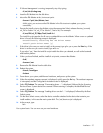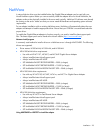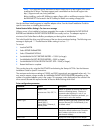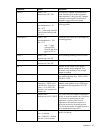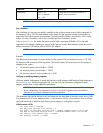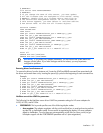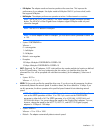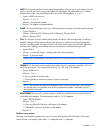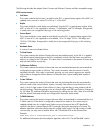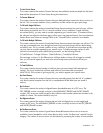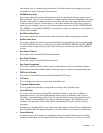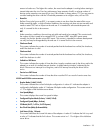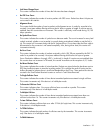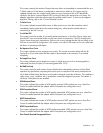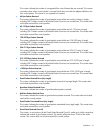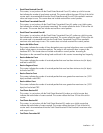Installation 35
The following describes the adapter Status Counters and Software Counters and their acceptable ranges.
N100 custom counters
• Link Status
This counter contains the link status, as read from the PHY, or general status register of the ASIC. It is
updated once a second. A value of 0 is link up. 1 is link down.
• Duplex
This counter holds the current duplex as read directly from the PHY, or general status register of the
ASIC. A value of 0 is not supported or unknown, 1 is half-duplex, and 2 is full-duplex. Unsupported
is usually due to an unsupported chip type, or link not being present.
• Current Speed
This counter holds the current speed as read directly from the PHY, or general status register of the
ASIC. A value of 0 is not supported or not available, 10 for 10 Mbps, 100 for 100 Mbps, and
1000 for 1000 Mbps. Unsupported is usually due to an unsupported chip type, or link not being
present.
• Hardware Status
A counter of non-zero indicates failure.
• Tx Good Frames
This counter contains the number of frames that were transmitted properly on the link. It is updated
only after the actual transmission on the link is completed, and not when the frame was read from
memory as is done for the TxCB status. This value varies in accordance to the amount of frames sent,
and can reach billions very quickly.
• Tx Maximum Collisions
This counter contains the number of frames that were not transmitted because they encountered the
configured maximum number of collisions. This counter increments when the network is heavily
saturated with traffic. If this value is consistently growing, you may want to segment your network
with switches to change the collision domain, so that more time is spent sending data instead of
collisions.
• Tx Late Collisions
This counter contains the number of frames that were not transmitted because they encountered a
collision outside of the normal collision window. Normally, late collision events should occur only
rarely, if at all. A high number of late collisions is often a sign that there is some problem with the
network topology. Check the topology to be sure that all cables meet IEEE specifications (Category 5
for 100 Mbps TX), and that all distance requirements for cabling are met. Also, check to be sure that
all of the network hubs and switches are configured for the proper duplex mode.
• Tx DMA Underruns
This counter contains the number of frames that were either not transmitted or re-transmitted due to a
Tx DMA under-run. If the device is configured to retransmit on under-run, this counter may be
updated multiple times for a single frame. Under-runs occur because a lack of PCI bandwidth
resulted in the device's internal transmit FIFO running dry during the transmission of a frame. The
adaptive algorithms within the software keep this number under control. If a high number of under-
runs are seen, you may want to load the driver with TxThreshold=200 on the command line.
Example:
Load N100 slot=2 Frame=Ethernet_802.2 TxThreshold=200
For additional information about the adaptive algorithm, refer to the "CurrentThreshold" section.



